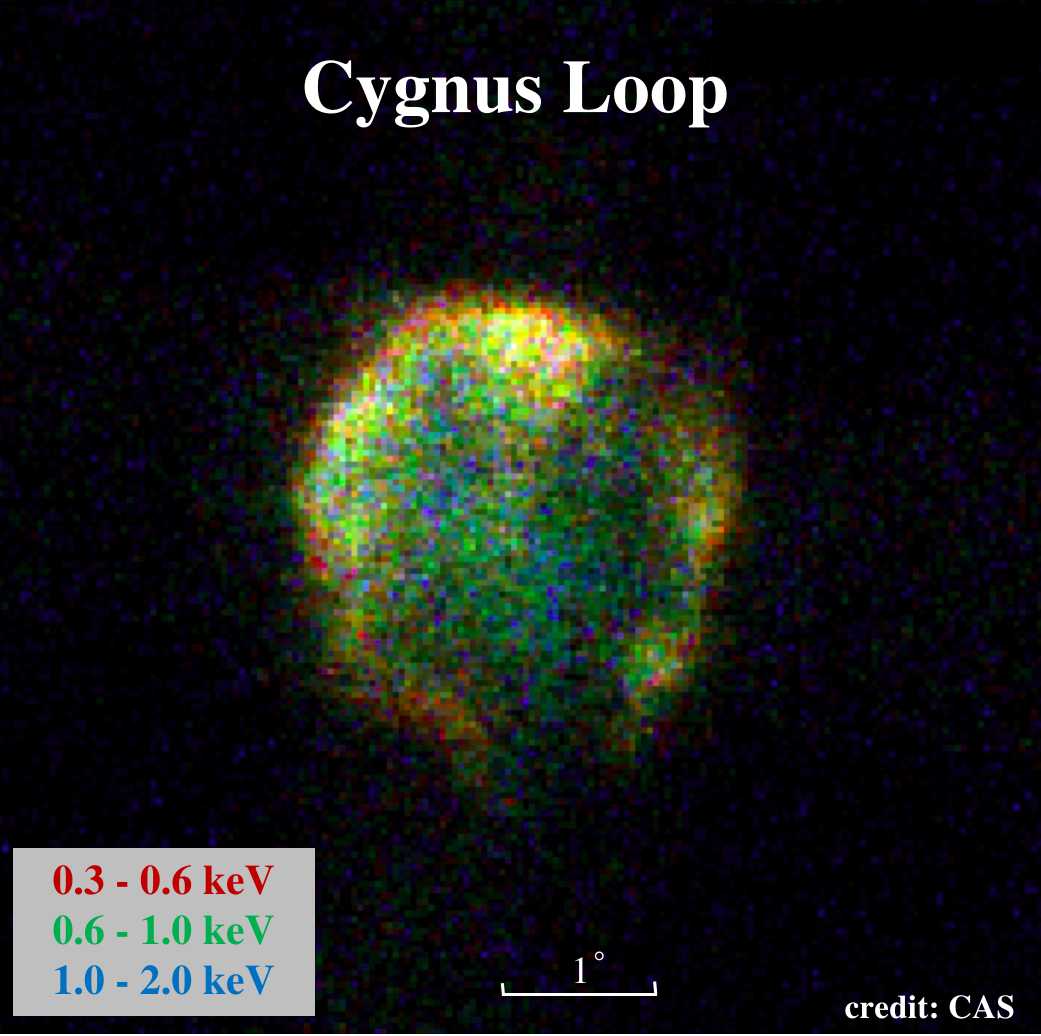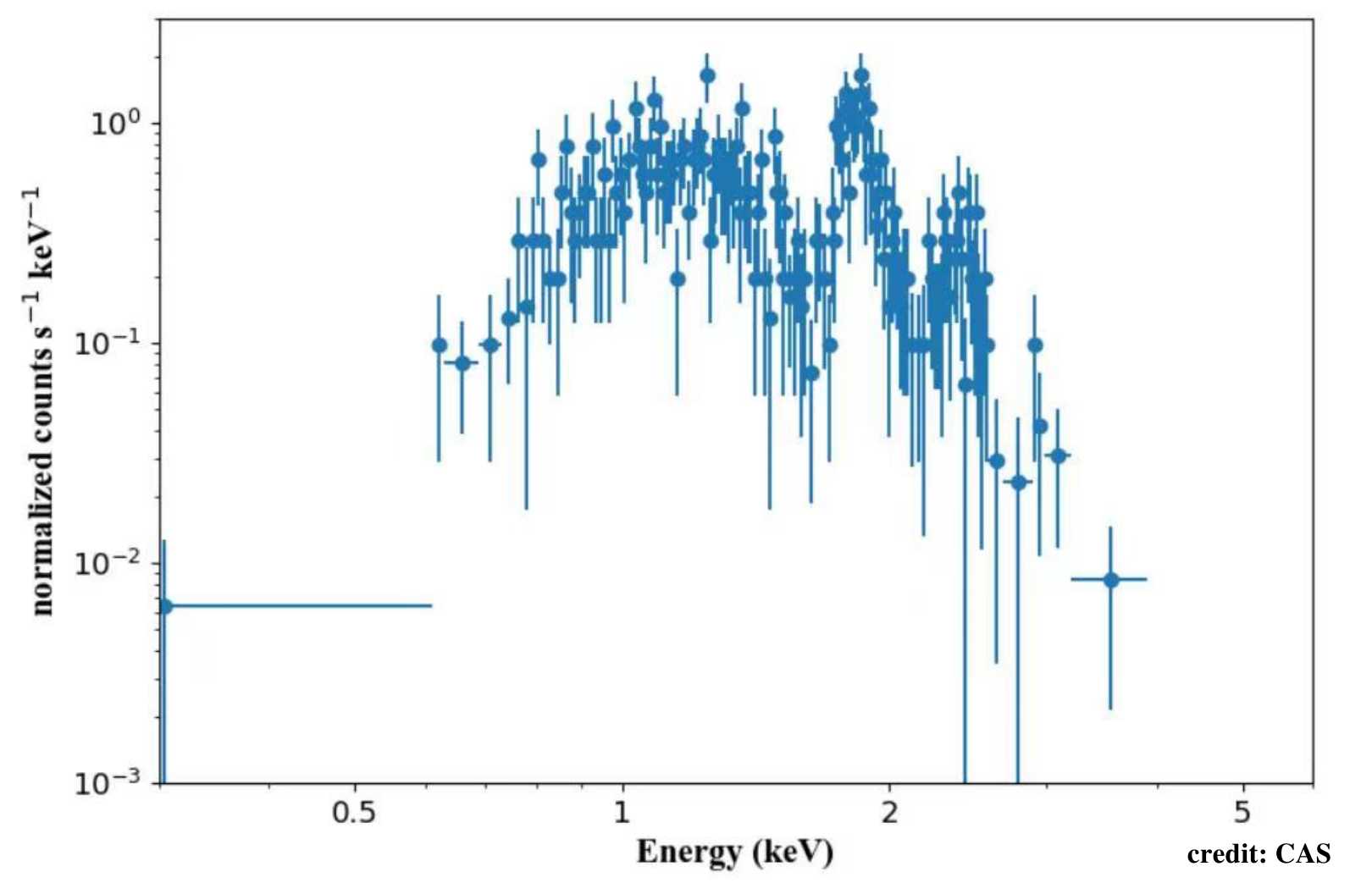The astronomical community has awaited a truly wide field-of-view X-ray focusing imager for decades. Now the initial results from the experimental flight of a test module, in excellent quality and consistency with previous simulations, herald the arrival of a powerful X-ray focusing imager of an unprecedentedly wide field-of-view.
EP-WXT Pathfinder, an experimental module for the wide-field X-ray telescope (WXT) of an astronomical satellite named Einstein Probe (EP), releases on August 27 (GMT+8) its first results from a test flight, including an 800-second X-ray “time-lapse photography” of a region of the Galactic center, a dense area at the core of our home galaxy, the Milky Way. These mark the first wide-field X-ray snapshots of our universe available for the public so far, captured by the first truly wide-field focusing imaging X-ray telescope ever flown in space. The results were reported by a team of scientists from the Chinese Academy of Sciences (CAS) at the 2nd China Space Science Assembly held in Taiyuan, China.
Since the first detection of X-ray signals from the depth of the universe 60 years ago, no wide-field-of-view X-ray focusing telescope was available for X-ray surveys and monitoring until the Pathfinder.

Figure1: EP-WXT Pathfinder targets on a region of the Galactic center at the core of the Milky Way. Shown here is the preliminary X-ray image (covering a field of view 18.6 degx18.6 deg) in 0.5–4 keV band obtained by this test module via a one-shot observation of 800 seconds on its test flight, against the backdrop of an optic image of the whole celestial sky as observed by the Gaia satellite of ESA. At the lower-right corner of the inset image the size of the full Moon is given for comparison.
(Image credit: X-ray: CAS, optical: ESA / Gaia / DPAC (https://www.cosmos.esa.int/web/gaia/gaiadr2_gaiaskyincolour))
The Pathfinder was sent into the orbit aboard the experimental satellite SATech-01 on July 27 (GMT+8) from the Satellite Launching Center in Jiuquan, China as an effort to verify the module’s in-orbit performance. The experimental journey is to pave the way for the future in-orbit science operation of EP for observations in the soft X-ray band. Set for observations on transients to explore open questions in time-domain astrophysics, EP is sponsored by CAS in cooperation with the European Space Agency (ESA) and the Max Planck Institute for Extraterrestrial Physics, and is expected to fly by the end of 2023.
The WXT test module aboard SATech-01 covers a field of view as wide as 340 square degrees (18.6°x18.6°), which makes it the first truly wide field-of-view X-ray focusing imaging telescope ever. X-ray imaging by bending the light rays (focusing) is notoriously difficult due to the X-ray photons’ high energies; and it is even more difficult to obtain clear images from a wide field of view. Thanks to a state-of-the-art technology called Lobster-eye micro-pore optics, the test module boasts a field of view at least one hundred times those of other focusing X-ray imagers. The complete WXT to fly aboard EP will be composed of a total of 12 identical modules of such, covering a field of view as wide as 3600 square degrees altogether.
During the test flight, the Pathfinder conducted a total of 4 days of in-orbit experimental observations, and successfully obtained the authentic X-ray spectra and images based on real measurements.

Figure 2: Comparison between the real observation (left) by EP-WXT Pathfinder and the simulated view (right) of the same patch of sky as given in figure 1. The real observation also identifies a source that had become obviously much brighter than viewed at a previous observation, as indicated by the red circle on the left. At the upper-left corner of the left image the size of the full Moon is given for comparison. (Image credit: CAS)
The key components of the Pathfinder include the X-ray imaging camera featuring an array of 36 micro-pore lobster-eye plates, and a focal-plane detector composed of 4 sets of large-format imaging sensors.
Despite that these results are still preliminary and extensive data processing has to be made, the test flight demonstrates that just a one-shot observation can at once cover X-ray sources from all directions within the stared patch of sky, including stellar-mass black holes and neutron stars. The observation also captured brightening of X-rays from a binary system containing a neutron star (left, figure 2). The data from these observations provide information about how the X-ray radiations of such celestial bodies change over time (figure 3), as well as the X-ray spectra of these celestial bodies. The images and spectra resulting from the test observations are highly consistent with the simulations (seen on the right of figure 2).

Figure 3: Variation of the X-ray brightness of one selected source in the Galactic center region shown in figure 1 and 2, which is captured in one snapshot observation. (Image credit: CAS)
The instrument also targeted a number of other X-ray sources, including the Large Magellanic Cloud (LMC), our neighbor galaxy (see figure 4). The results demonstrate that just a one-shot observation can cover the whole of this galaxy, detecting multiple X-ray sources, including black holes and neutron stars. In its future observations, the imager is expected to effectively monitor the X-ray variability of celestial bodies, and discover new transient sources. Figure 5 gives the X-ray image resulting from its observation on the famous Cygnus Loop nebula, showing the imaging capability of lobster-eye telescope on diffuse X-ray sources. As shown in figure 6, its observation on another supernova remnant, the Cas A, confirms the good X-ray spectral resolution of the detector. The telescope also detected X-rays from a distant quasar 810 million light-years away (figure 7). 
Figure 4: The preliminary X-ray “time-lapse photography” (right) in 0.5–4 keV band as the result from a one-shot observation on the Large Magellanic Cloud (LMC), our neighbor galaxy, in comparison with the DSS optical image of LMC. The observation lasted for 700 seconds. Only image of one imaging sensor is shown (9.3 deg x 9.3 deg). (Image credit: X-ray: CAS; optical: DSS (https://archive.eso.org/dss/dss))

Figure 5: X-ray image of the Cygnus Loop nebula (2.5-degree diameter) obtained with several observations totaling 2,400 seconds. (Different colors represent X-ray photons of different energies: red 0.3–0.6 keV; green 0.6–1.0 keV; blue 1.0–2.0 keV). (Image credit: CAS)

Figure 6: X-ray spectrum of the supernova remnant Cas A with an observation of 18 minutes. (Image credit: CAS)

Figure 7: Detection of X-rays from a distant quasar, 3C 382, at a distance of 810 million light-years, revealing the Pathfinder’s capability of detecting relatively faint X-ray sources. (Image credit: CAS)
As seen from the initial results from the test observations, the instrument operates smoothly, with its performance meeting the requirements of one EP WXT module.
“It’s exciting to see the decade-long effort bearing its first fruit,” remarks Dr. YUAN Weimin of the National Astronomical Observatories of the Chinese Academy of Sciences (NAOC), Principal Investigator (PI) of the EP mission. “This will lay a solid basis for the ensuing R&D of EP and promise abundant, high-quality data from its future flight after launch,” he adds.
“So proud of our WXT team,” says Dr. ZHANG Chen, PI of the WXT mirror assembly, “the 10-year arduous work is eventually receiving the first reward. Anticipating its real flight!”
“These results are really impressive. This is the first wide-field X-ray telescope ever! You have made a record,” comments Prof. Paul O’Brien of the University of Leicester, UK, who is the ESA appointed scientist in the EP mission.
“We have been waiting for a true wide-field, soft X-ray imager for many decades so it is wonderful to see the WXT test module in flight on EP-WXT Pathfinder,” comments Prof. Richard Willingale, also of the University of Leicester.
“The images and spectra look excellent, clearly matching expectations. This technology will revolutionize monitoring of the X-ray sky, and the test module shows the strong science potential of the Einstein Probe mission.” They conclude.
The WXT module is developed by CAS. The SATech-01 experimental satellite is sponsored by CAS and developed by the Innovation Academy of Microsatellites under CAS. ESA contributes to the development of the WXT module via provision of independent test and calibration of the devices and mirror assembly.

Figure 8: The WXT test module at an X-ray calibration experiment before integration onto the satellite. (Image credit: CAS)
Source: EP Team

